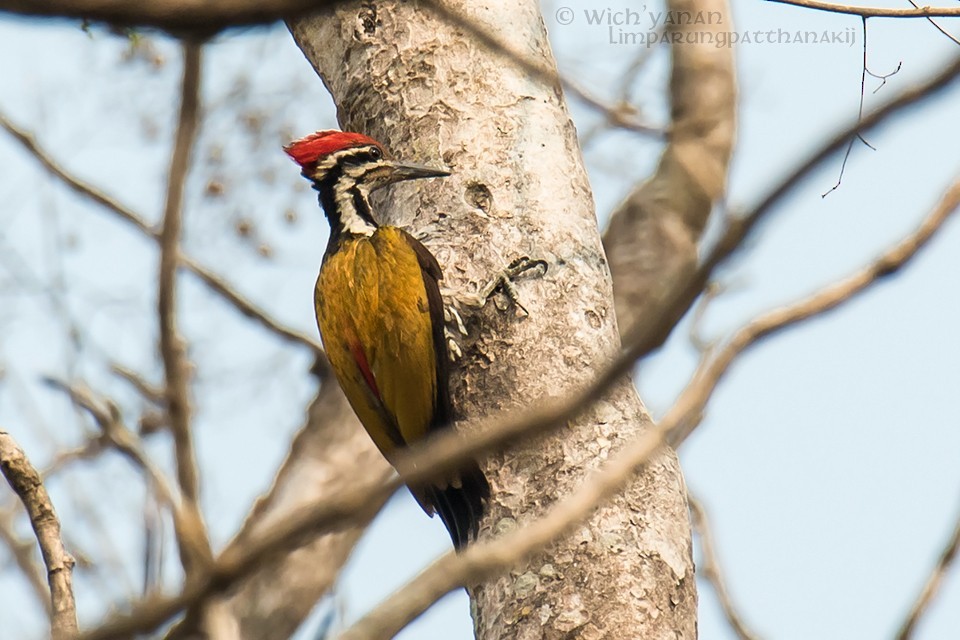Himalayan Flameback
A species of Dinopium Flamebacks Scientific name : Dinopium shorii Genus : Dinopium Flamebacks
Himalayan Flameback, A species of Dinopium Flamebacks
Botanical name: Dinopium shorii
Genus: Dinopium Flamebacks
Content
Description General Info
 Photo By Wich'yanan (Jay) Limparungpatthanakij
Photo By Wich'yanan (Jay) Limparungpatthanakij Description
The Himalayan flameback is very similar in appearance to the Greater Goldenback (Chrysocolaptes lucidus), but is not at all closely related. The primary difference is its smaller size and bill. The Himalayan flameback can be identified by: their black hind neck, the brownish centre on their throat, that can go down the breast on some and is bordered by an irregular black spotting. They also have an indistinct divided moustachial stripe, the centre of which is brownish and sometimes reddish in males. The Himalayan flameback also has ether reddish or brown eye and three toes. The breast of the Himalayan flameback is irregularly streaked with black but on occasion completely white. Their wings are coppery brown to red in colour. Lastly the males have a yellowish-red forehead that becomes more red on the crest. In contrast, the female's crest is entirely black streaked with white. In both sexes the crest is bordered by white and black bands on either side of their head. 
Size
32 cm
Nest Placement
Cavity
Feeding Habits
Himalayan Flameback primarily consumes arthropod insects, foraging in flocks, often with Greater Goldenback woodpeckers. Their feeding techniques and dietary preferences align with typical woodpecker patterns, hunting for prey within tree bark.
Habitat
The habitat of himalayan Flameback predominantly includes mature deciduous forests, semi-evergreen forests, and primary lowland forests that feature significant presences of Ficus and Bombax species. These birds are adapted to environments found in lowlands and foothills across broader geographical regions characterized by such vegetative growth.
Dite type
Insectivorous
General Info
Feeding Habits
Bird food type
Distribution Area
Himalayan Flamebacks are commonly found in the Indian subcontinent, primarily in the lower-to-middle altitudes of the Himalayan sal forest region. Its range spans across Bangladesh, Bhutan, India, Myanmar, and Nepal, where they are year-round residents. A disjunct population also occurs in south-eastern Ghats. The Himalayan flameback's habitat mainly compromises of mature tropical/subtropical deciduous forests as well as semi-evergreen forests. They prefer lowland Ficus and Bombax forest. 

 Photo By Wich'yanan (Jay) Limparungpatthanakij
Photo By Wich'yanan (Jay) Limparungpatthanakij Scientific Classification
Phylum
Chordates Class
Birds Family
Woodpeckers Genus
Dinopium Flamebacks Species
Himalayan Flameback